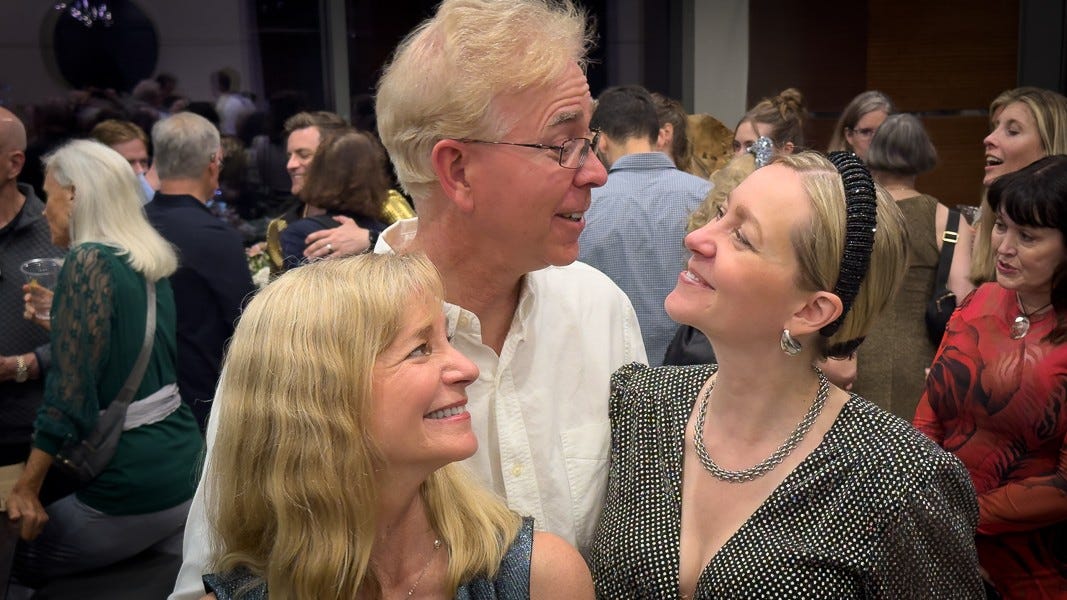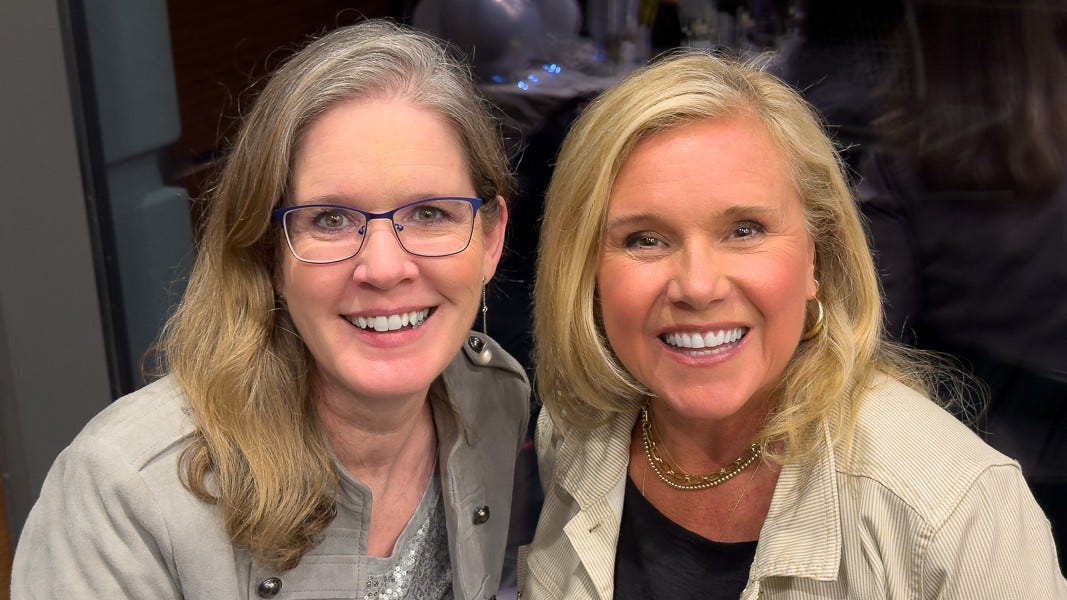And Per Se And
Last week, while listening to Ezra Klein's podcast with Kathryn Schultz, I was captivated by a simple linguistic insight that carries profound implications for how we lead and connect with others. Schultz shared a fascinating historical detail: the ampersand (&) was once considered the 27th letter of the alphabet, positioned at the very end as "and per se and." This wasn't merely a grammatical curiosity—it reflected the fundamental importance of connection in human communication and thought. The thoughts stuck with me during my morning walk through Riverside Park; I began to see how the concept of "and" represents something far more powerful than a simple conjunction. It embodies three essential leadership principles: the capacity for connection, the wisdom found in liminal spaces, and the potential of expansive thinking.
The word "and" is fundamentally about connection—it bridges ideas, people, and possibilities that might otherwise remain isolated. In leadership, we often fall into the trap of either-or thinking, believing we must choose between competing priorities, perspectives, or approaches. The most effective leaders understand that connection, not competition, creates the strongest foundations for success. When we approach challenges with an "and" mindset, we honor multiple viewpoints simultaneously. Instead of dismissing alternative strategies, we explore how different approaches might complement each other. This connection-first mentality transforms potential conflicts into collaborative opportunities. It allows us to build teams where diverse talents aren't just tolerated but actively woven together into something greater than the sum of their parts. The ampersand reminds us that as leaders, our role isn't to choose sides but to find the threads that weave disparate elements into a cohesive whole.
The space represented by "and" is where the magic happens—it's the pause between thoughts, the breath between words, the moment of possibility before decision. This liminal space is where creativity flourishes and innovation takes root. When we rush to fill these gaps with quick answers or immediate solutions, we miss the wisdom that emerges in the silence between knowing and unknowing. The best leaders learn to be comfortable in these spaces, recognizing that transformative insights often arise not from what we know, but from what we're willing to discover. This mental space makes room for reflection, for unexpected connections of ideas, and for solutions to emerge that honor complexity rather than forcing simplicity. When we honor the "and" space, we create room for serendipity, for the kind of breakthrough thinking that can only emerge when we resist the urge to collapse possibilities into certainties.
Most powerfully, "and" represents the endless possibility of expansion. Where other conjunctions limit or contrast, "and" opens doors to addition. It suggests that we're never finished, never complete, always capable of incorporating new elements into our understanding and our leadership approach. This openness to expansion challenges us to move beyond scarcity toward abundance. Instead of viewing resources, opportunities, or recognition as finite, we begin to see how adding new perspectives, voices, and approaches can increase what's possible. The nature of "and" encourages us to think bigger, to imagine solutions that include rather than exclude, to build systems that grow through diversity rather than uniformity. It reminds us that leadership isn't about having the answers but about creating space for the questions—and the people who might help us discover the unexpected.
In life and leadership, embracing the power of "and" transforms how we engage with complexity and uncertainty. By prioritizing connection over competition, dwelling in liminal spaces, and maintaining an expansive view of what's possible, we create environments where those we love and lead can thrive. The humble ampersand, once considered important enough to complete our alphabet, offers us a reminder that our greatest strength lies not in choosing between possibilities, but in finding ways to weave them together into something entirely new.
With love, gratitude, and wonder,
Scott
What Power Means: Leader & Coach by Suzie Bishop and Marshall Goldsmith
Suzie Bishop and Marshall Goldsmith explore the nuanced differences between coaching and leadership relationships through the lens of three power bases: position, referent, and expert power. Their analysis reveals that while leaders derive significant influence from their organizational position, including authority over promotions, raises, and terminations, coaches must rely entirely on their expertise and trust-building abilities since they lack positional authority. This fundamental difference creates unique opportunities for each role: leaders can leverage organizational power to drive compliance, while coaches can foster more honest, vulnerable conversations precisely because they pose no career threat to their clients.
The authors emphasize that referent power, essentially trust, serves as the cornerstone for both relationships but operates differently in each context. For coaches, this trust-based influence often compensates for their lack of positional power, enabling deeper developmental conversations. They also distinguish between whom each role ultimately serves: leaders must prioritize organizational goals above individual aspirations, while coaches can more freely advocate for their coachees' personal development objectives. Bishop and Goldsmith argue that understanding these power dynamics and service orientations is crucial for both leaders and coaches to achieve better "matches" with those they influence and drive more effective development outcomes.
Your “Big Break” Isn’t The Start Of Your Journey – It’s The Reward by Whitney Johnson
Whitney Johnson explores the concept of career "big breaks" through the compelling story of former AT&T Business CEO Anne Chow. Whitney argues that these pivotal moments aren't just lucky coincidences but rather the result of deliberate effort, strategic risk-taking, and persistence. She highlights how Anne faced five rejections for sales positions over three years before finally finding a female leader willing to take a chance on her untested potential. The breakthrough came because Anne had built a foundation of trust and demonstrated her capabilities in previous roles.
Whitney emphasizes that Anne's journey exemplifies three key growth accelerants: stepping back to accept unexpected opportunities (like a Chief of Staff role she initially dismissed), taking calculated risks to prove her abilities (including leadership roles across multiple cities and challenging customer service assignments), and learning from failure rather than being defeated by it. Through Anne's story, Whitney demonstrates that big breaks are earned through resilience, adaptability, and the willingness to embrace setbacks as motivation rather than obstacles to career advancement.
When Your Go-To Leadership Style Stops Working by Nihar Chhaya, MBA, MCC
In this article, Nihar Chhaya explores the critical challenge many senior leaders face when their established leadership style suddenly becomes ineffective. He argues that developing versatility across multiple leadership approaches is essential for sustained success, even though it requires uncomfortable personal transformation that goes beyond improving technical skills. Chhaya emphasizes that leaders who fail to adapt beyond their comfort zones will struggle to inspire others and maintain followership in today's rapidly changing business environment.
Chhaya outlines five practical strategies for expanding leadership range, drawing from his executive coaching experience. These include scanning for shifts in business conditions and stakeholder needs, identifying overused styles while experimenting with new approaches based on Daniel Goleman's six leadership frameworks, and being transparent about style changes to maintain team trust. He emphasizes the importance of practicing new approaches despite potential pushback, seeking regular feedback, and ultimately prioritizing versatility over authenticity. Through compelling case studies of executives who successfully transformed their leadership approaches, Chhaya demonstrates that adaptive leaders who can embody multiple styles depending on situational needs will have significant strategic advantages in meeting future organizational challenges.













